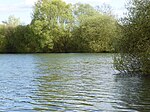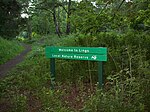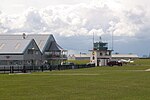Northamptonshire (; abbreviated Northants.) is a ceremonial county in the East Midlands of England. It is bordered by Leicestershire, Rutland, and Lincolnshire to the north, Cambridgeshire to the east, Bedfordshire, Buckinghamshire, Oxfordshire to the south, and Warwickshire to the west. Northampton is the largest settlement and the county town.
The county has an area of 2,364 km2 (913 sq mi) and a population of 747,622. The latter is concentrated in the centre of the county, which contains the county's largest towns: Northampton (243,511), Corby (68,164), Kettering (63,144), and Wellingborough (56,564). The northeast and southwest are rural. The county contains two local government districts, North Northamptonshire and West Northamptonshire, which are both unitary authority areas. The county historically included Market Harborough and the Soke of Peterborough.
The county is characterised by low, undulating hills, particularly to the west. They are the source of several rivers, including the Avon and Welland, which form much of the northern border; the Cherwell; and the Great Ouse. The River Nene is the principal river wihin the county, having its source in the southwest and flowing northeast past Northampton and Wellingborough. The highest point is Arbury Hill southwest of Daventry, at 225 m (738 ft).
There are Iron Age and Roman remains in the county, and in the seventh century it was settled by the Angles and Saxons, becoming part of Mercia. The county likely has its origin in the Danelaw as the area controlled from Northampton, which was one of the Five Boroughs. In the later Middle Ages and Early Modern Period the county was relatively settled, although Northampton was the location of engagements during the First and Second Barons' Wars and the Wars of the Roses, and during the First English Civil War Naseby was the site of a decisive battle which destroyed the main Royalist army. During the Industrial Revolution Northamptonshire became known for its footwear, and the contemporary county has a number of small industrial centres which specialise in engineering and food processing.








